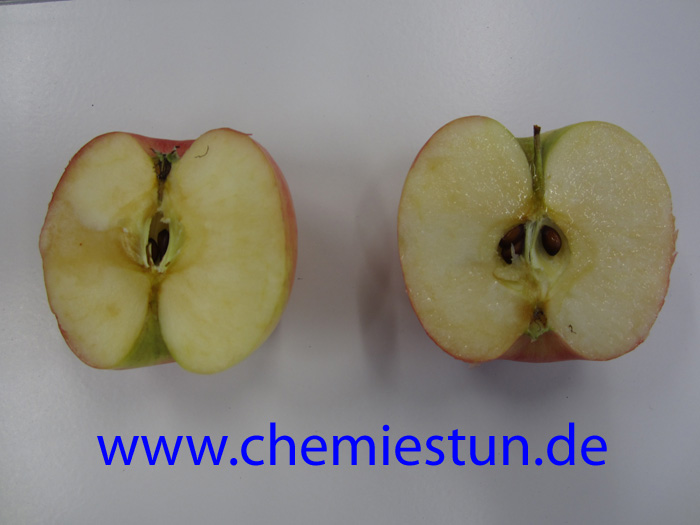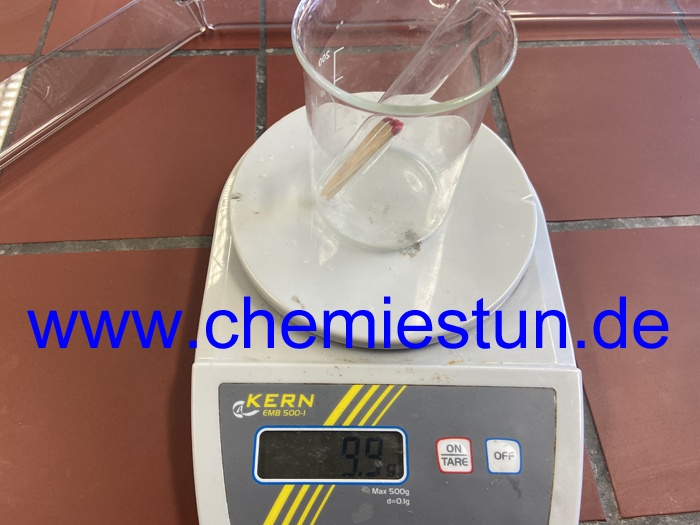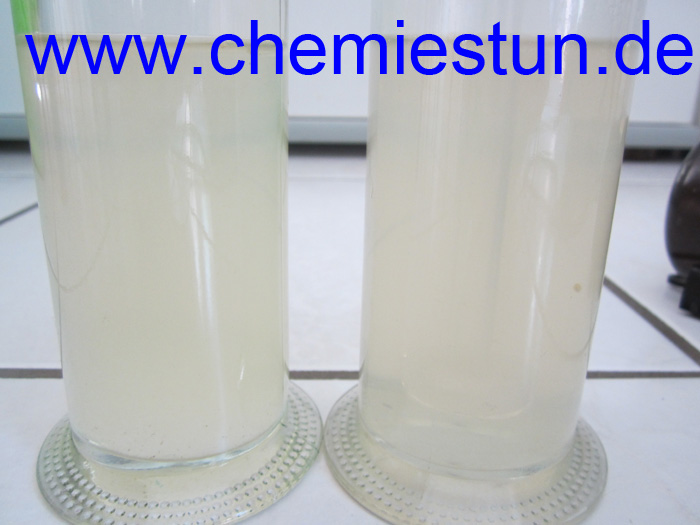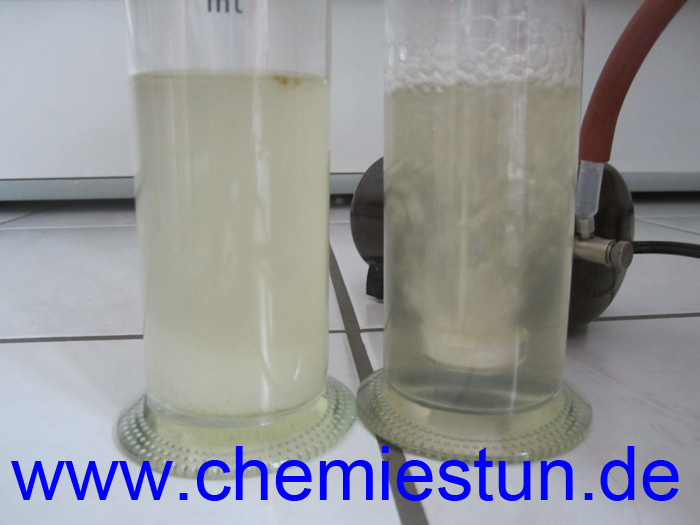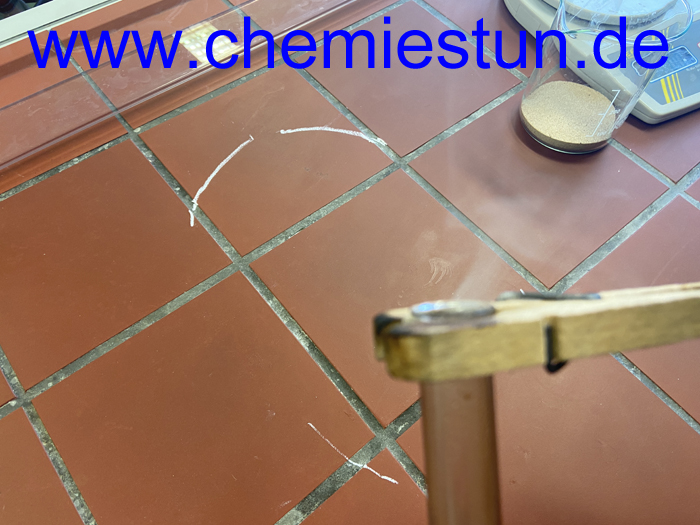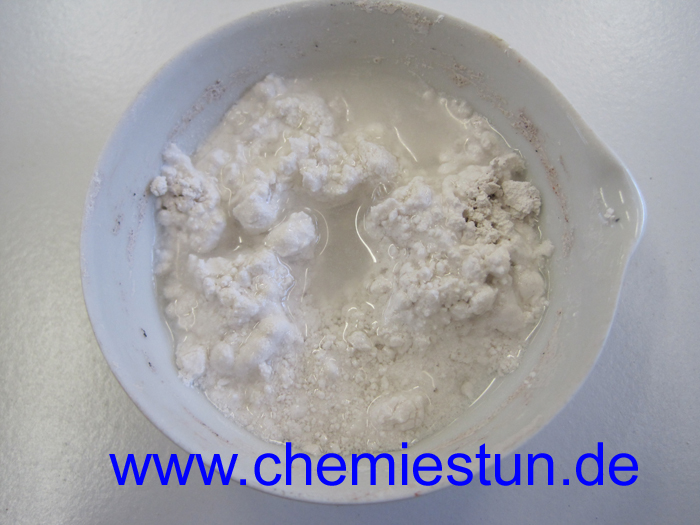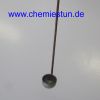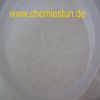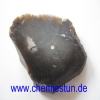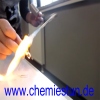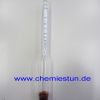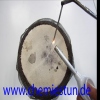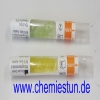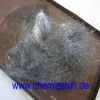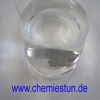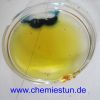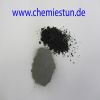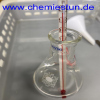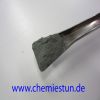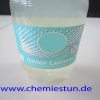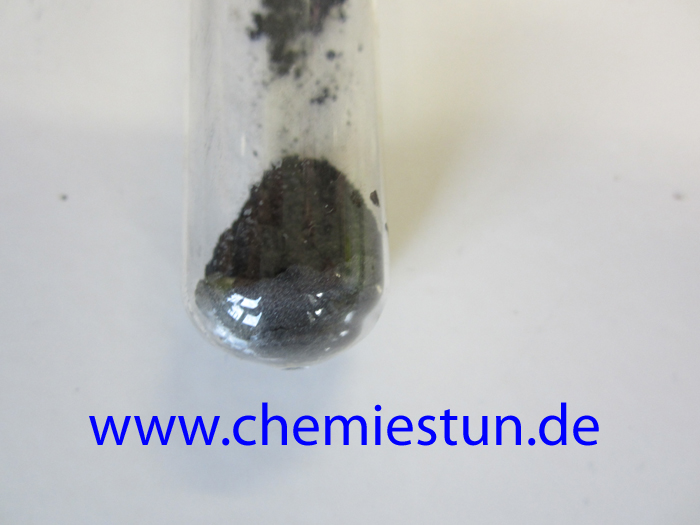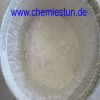Informationen und Experimente für den Chemieunterricht
| Rund um die Chemie in der Realschule - frag' deinen Chemielehrer! | nicht eingeloggt |
Chemie in der Schule: Informationen, Sicherheit, Experimente
150 Experimente für die Schule - eine kleine Auswahl!
Aktuelles
Chem-Pions Chemiewettbewerb
Auf der Webseite chem-pions.de finden Sie einen spannenden
Chemiewettbewerb für Schülerinnen und Schüler der Klassen 5 - 9. Es geht um chemische Reaktionen mit Licht
, z.B.
Knicklichter oder Reaktionen unter Schwarzlicht.
Hier finden Sie außerdem die aktuellen Aufgaben als PDF-Datei! Mitmachen lohnt sich!
BundesUmweltWettbewerb

Geld- und Sachpreise im Wert von 25.000 € sind beim BundesUmweltWettbewerb Vom Wissen zum nachhaltigen
Handeln
zu gewinnen. Einsendeschluss ist der 15. März 2020. Mit ihren Projekten sollen die
Wettbewerbsteilnehmerinnen und -teilnehmer Ursachen von Umweltproblemen auf den Grund gehen und
darauf aufbauend den Problemen mit Kreativität und Engegement aktiv entgegentreten. Teilnehmen dürfen
Einzelpersonen oder Teams mit bis zu sechs Personen zwischen 10 bis 16 Jahren (Kategorie I) und 17 - 20
Jahren (Kategorie II).
Weitere Informationen findet man auf der Webseite www.bundesumweltwettbewerb.de
Wechsel nach Mönchengladbach

Nach einem tollen halben Jahr an der Marienschule in Alsdorf bin ich zum 01.02.2020 an die Realschule an der Niers nach Mönchengladbach gewechselt. Dort nehme ich die Aufgaben des 1. Konrektors wahr, worauf ich mich schon sehr freue. Für die Webseite https://www.chemiestun.de bedeutet dies, dass in naher Zukunft ersteinmal weniger neue Versuche eingestellt werden. Ich bin mir sicher, dass sich dieser Umstand aber schnell wieder ändern wird.
Stefan KlockeWechsel an eine neue Schule
Nachdem die Käthe-Kollwitz-Realschule in diesem Sommer endgültig ausgelaufen ist und die letzten Schülerinnen und Schüler die Schule verlassen haben, führt mich mein Weg an die Marienschule in Alsdorf. Dort habe ich endlich wieder einen Chemieraum zur Verfügung, sodass in den kommenden Monaten neue Experimente in neuer Umgebung durchgeführt werden können. Ich werde mich bemühen, dass möglichst viele dieser Experimente ihren Weg auf diese Webseite finden.
Außerdem arbeite ich an einer Aktualisierung der Gefährdungsbeurteilungen. Die neuen Beurteilungen stehen spätestens zum Ende der Sommerferien (in NRW) zur Verfügung.
Stefan KlockeRegionalwettbewerb 2019 Jugend-forscht
Juliana Klocke nahm am 15.02.2019 nun schon zum 7. Mal am Jugend-forscht-Wettbewerb teil. Nachdem sie im letzten Jahr einen ersten Platz in der Sparte Mathematik/Informatik mit ihrer Webseite Medihelfer.de erringen konnte, widmete sie sich in diesem Jahr der Reinigung von Windschutzscheiben von innen. Sie errang einen tollen dritten Platz!
Leider wird die Realschule Aldenhoven nie wieder am Wettbewerb teilnehmen, da sie im Sommer endgültig zugunsten einer Gesamtschule schließt.
Wir gratulieren der Schule zum langjährigen Engagement beim Wettbewerb.
Hier finden Sie weitere Eindrücke vom Regionalentscheid.
Bundeswettbewerb 2018 cbm - Sonderpreis
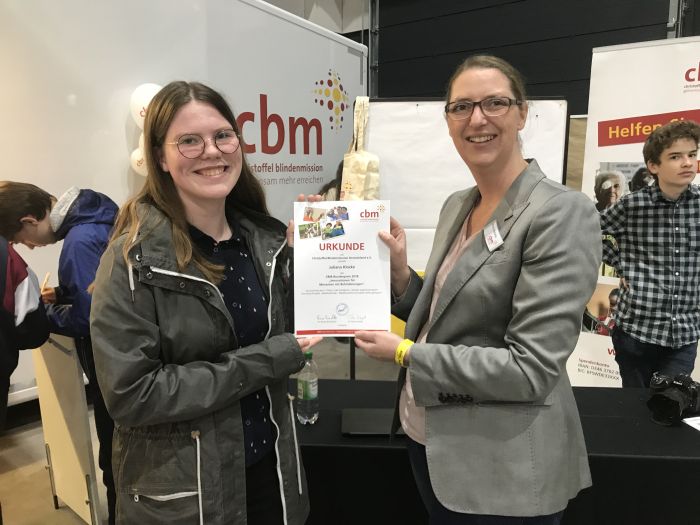
Beim Bundeswettbewerb der Sonderpreisträger der cbm erreichte Juliana Klocke einen 2. Platz!
Nachdem Juliana Klocke mit ihrer Webseite Medihelfer.de auf dem Landeswettbewerb
Jugend-forscht/Schüler experimentieren in Essen den Sonderpreis Innovationen für Menschen mit Behinderungen
bekommen hatte, wurde sie am 20.10.2018 nach Rust bei Freiburg zum Bundeswettbewerb aller Sonderpreisträger eingeladen.
Dort belegte Sie einen herausragenden 2. Platz auf Bundesebene. Herzlichen Glückwunsch!
Hier finden Sie weitere Eindrücke vom Bundeswettbewerb.
Landeswettbewerb 2018 Jugend-forscht
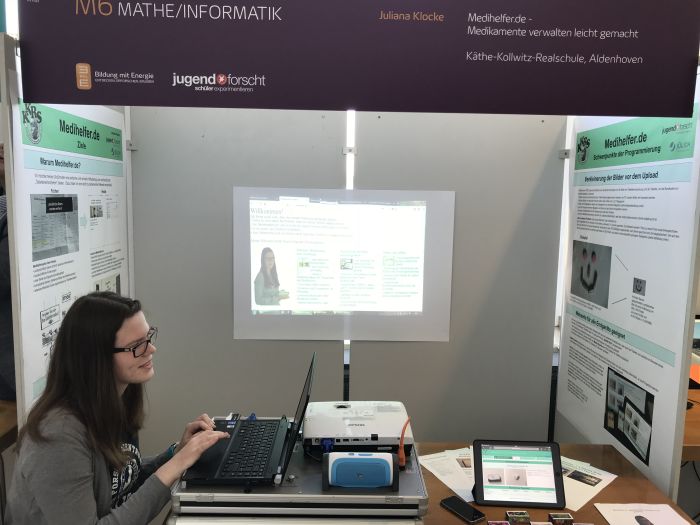
Juliana Klocke beim Landeswettbewerb erreicht 3. Platz und Sonderpreis!
Die Schülerin der Käthe-Kollwitz-Realschule Aldenhoven, Juliana Klocke, präsentierte die Webseite
Medihelfer.de auf dem Landeswettbewerb Jugend-forscht/Schüler experimentieren
in Essen. Am 04.05.2018 wurden die Arbeiten präsentiert, einen Tag später fanden die Siegerehrungen statt.
Juliana erreichte in ihrer stark besetzten Sparte Mathematik/Informatik einen hervorragenden 3. Platz und sie
wurde für ihre überragende Arbeit mit dem mit 150 € dotierten Sonderpreis Innovationen für Menschen mit Behinderungen
ausgezeichnet. Wir sind mehr als Stolz auf diesen Erfolg unserer Schülerin. Herzlichen Glückwunsch!
Hier finden Sie weitere Eindrücke vom Landeswettbewerb.
Regionalentscheid 2018 Jugend-forscht

1. und 3. Platz!
Am 07.02.2018 nahmen zwei Gruppen am Regionalentscheid Jugend-forscht
im Forschungszentrum Jülich teil: Laura-Vanessa Della Mea
optimierte das Abbrennverhalten von Kerzen - sie errang einen schönen 3. Platz. Juliana Klocke programmierte die Webseite
Medihelfer.de, die dabei helfen kann, dass Menschen ihre tägliche Tabletteneinnahme
besser organisieren können. Sie wurde mit einem 1. Platz belohnt. Herzlichen Glückwunsch für diese tollen Erfolge - und das bei einer
auslaufend-schließenden Realschule!
Hier finden Sie weitere Eindrücke vom Regionalentscheid.
Büchertipps Chemieunterricht
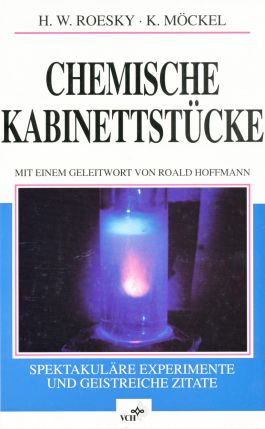
Auf Anregung eines Nutzers habe ich eine neue Rubrik Büchertipps eingebaut. Hier finden Sie in
Zukunft eine Liste meiner Lieblingschemiebücher
incl. Bewertung. Über Hinweise und Tipps zu fehlenden Büchern würde ich
mich sehr freuen.
Regionalentscheid 2017 Jugend-forscht
Am 10.02.2017 nahm eine Gruppe am Regionalentscheid Jugend-forscht
im Forschungszentrum Jülich teil - natürlich mit einem
Thema aus der Chemie! Ein beachtlicher 2. Platz wurde erreicht, und das ohne funkionierenden Chemieraum. Hier
finden Sie weitere Eindrücke vom Regionalentscheid.
Abgeschlossene Umstellung der Chemikaliendaten auf aktuelle GHS-Daten
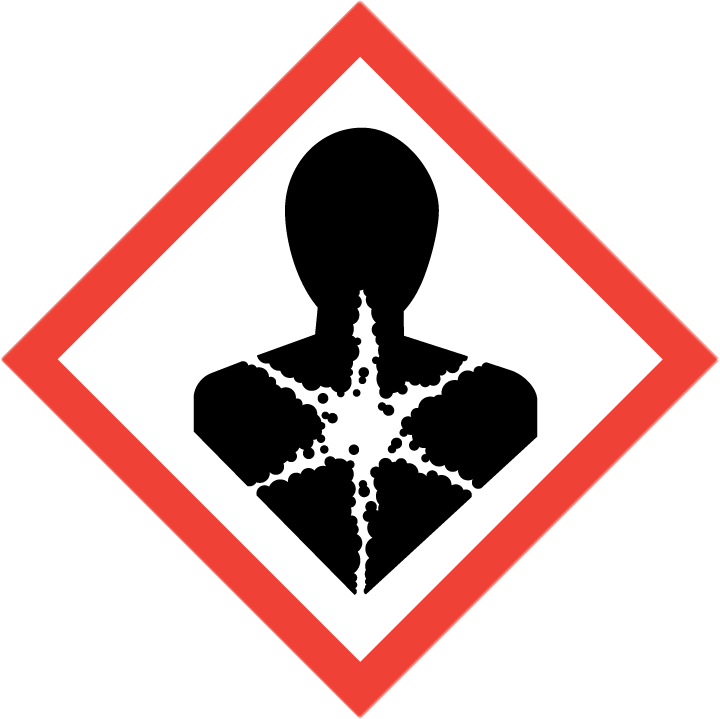
Die Umstellung der Chemikaliendaten auf GHS-Daten ist nun komplett abgeschlossen. Soweit vorhanden finden Sie zu jeder Chemikalie einen direkten Link zu den Sicherheitsdatenblättern der GESTIS-Stoffdatenbank vom IFA (Institut für Arbeitsschutz der Deutschen Gesetzlichen Unfallversicherung). Diese Datenbank stellt vollständige Sicherheitsdatenblätter (SDS) kostenlos zur Verfügung.
Neue RISU
Unter RISU 2016 kann die aktuelle RISU vom 26.02.2016 heruntergeladen
werden. Vor allem der Schwerpunkt Gefahrstoffe
wurde aktualisiert. In den kommenden Wochen werde ich die Webseite ebenfalls aktualisieren.
Neuester Beitrag im Forum
Neuer Beitrag verfasst von Johanson am 02.04.2017, 09:50:24 Uhr
Muster-Gefährdungsbeurteilungen
Auf der Seite www.gefahrstoffe-schule-bw.de findet man Muster Gefährdungsbeurteilungen für gängige Standardversuche.
Unter:
- Gefahrstoffmanagement
- Muster-Gefährdungsbeurteilungen
- Dokumentation für Sek I oder II
Die drei neuesten Experimente
| ||
| ||
|
Zuletzt aufgerufenes Experiment
| ||
Aufgerufen durch herrbirkemeyer. |
Zufälliges Experiment aus der Sammlung
|
Informationen
Sie suchen Informationen rund um die Chemie in der (Real-) Schule?
Sie suchen eine Datenbank mit den Sicherheitshinweisen zu Ihren Chemikalien in der Schule?
Sie wollen Ihren Chemikalienbestand katalogisieren und von überallher überblicken, ändern und GHS-Etiketten drucken können?
Dann sind Sie bei Chemiestun.de
genau richtig!
Herzlich willkommen!
Neu:
- Chemikalien-Bestandsdatenbank individuell für jede Schule
- Etikettendruck für Chemikaliengefäße verknüpft mit der Bestandsdatenbank
- Aktuelle Informationen zur GHS-Umstellung für Schulen
- Gefährdungsbeurteilungen zu jedem Experiment auf der Webseite
- Eigene Gefährdungsbeurteilungen erstellen
Bitte registrieren Sie sich noch heute. Ihre Daten werden auf keinen Fall an Dritte weitergegeben. Sämtliche Angebote der Webseite sind garantiert kostenlos und dürfen für den eigenen Chemieunterricht verwendet werden. Über Feedback würden wir uns sehr freuen.
Ihr Chemiestun.de-Team
www.chemiestun.de - Änderungen
Jubiläum! 150 Experimente...
Heute, am 16.06.2014, habe ich das Experiment Nummer 150 Herstellung von Schokolade
in die Webseite eingepflegt!
Aus kleinen Anfängen wurde eine umfangreiche Webseite rund um das Thema Chemie in der Schule
, die eine
Anlaufstelle für alle Lehrerinnen, Lehrer und andere Interessierte darstellen soll, die einfach nur Spaß an der Chemie
haben wollen.
Historie
 Am 24.05.2008 war es endlich soweit: schon lange hatte ich mit dem Gedanken gespielt, eine Chemie-Webseite mit
vielen Experimenten und Unterrichtshilfen ins Web zu stellen.
Am 24.05.2008 war es endlich soweit: schon lange hatte ich mit dem Gedanken gespielt, eine Chemie-Webseite mit
vielen Experimenten und Unterrichtshilfen ins Web zu stellen.
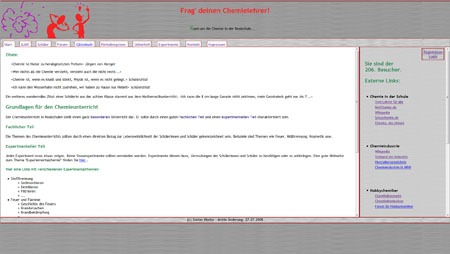 Aus ersten Anfängen wurde nach und nach die Webseite, wie Sie sie heute kennen. An dieser Stelle möchte ich mich bei allen Schülerinnen
und Schülern und allen übrigen Freunden der Webseite herzlich bedanken.
Aus ersten Anfängen wurde nach und nach die Webseite, wie Sie sie heute kennen. An dieser Stelle möchte ich mich bei allen Schülerinnen
und Schülern und allen übrigen Freunden der Webseite herzlich bedanken.
Stefan Klocke
Die zwei "gefährlichsten" Experimente
| ||
|
Suche
Hinweis:
Benutzeraktionen:
Online
Online in den letzten 5 Minuten.
Top-3 der Experimente
| Platz | Versuch | Aufrufe |
|---|---|---|
| 1 | Entzünden des Gasbrenners | 354 |
| 2 | Abflussreiniger-Bombe | 304 |
| 3 | "Vergolden" einer Kupfermünze | 274 |
Aktuelle Suchbegriffe:
Besucherzähler:
353459 Besucher.
